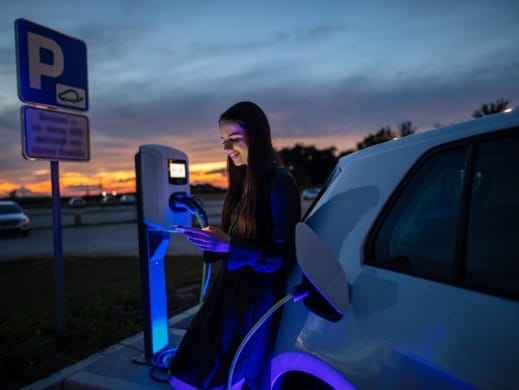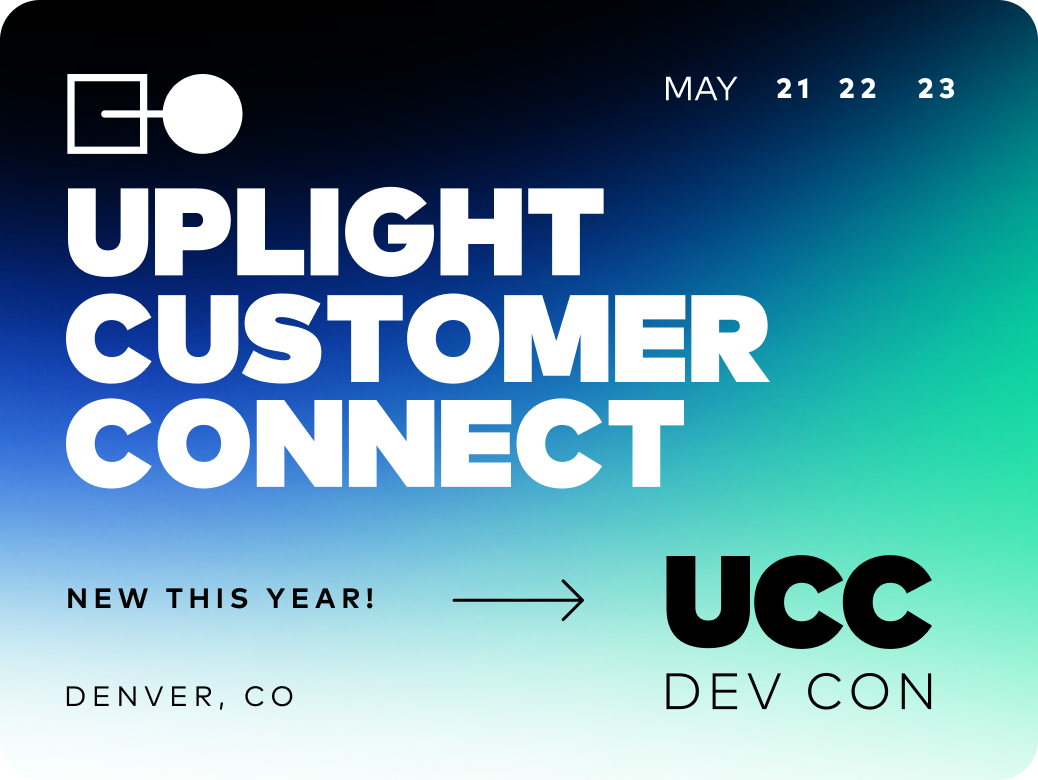Ensure rates and managed charging programs are easy to understand for customers even if the technology is not.
This article is part of a series; Read Residential EV Charging Principle 1: Meet Customers Where They Are, Principle 2: Cast a Wide Net to Identify EV Drivers, and EV Residential Charging Principle 3: Maximize EV Data Aggregation.
Utility EV programs are in an innovation stage of their market development, with seemingly endless combinations of technology and design choices for program managers to wade through. It’s an exciting time, and the possibilities seem endless. But we know that greatly increased EV load is coming fast, putting the pressure on utilities to stand up programs sooner than later. This can feel overwhelming.
A mere sampling of the questions keeping utility leaders up at night include:
-
- What should the incentive structure be?
- Should it be award-based or rely on price signals such as Time of Use rates?
- Is it better to use AMI data or charger device data?
- Should the TOU rate isolate EV charging via a separate sub-meter, or should the TOU rate apply to the whole house?
- Can we also include demand response events?
- How are we going to market the program and to whom?
- What is our strategy for customer acquisition, enrollment, onboarding, and ongoing engagement?
These are all very important, but absent is the critical consideration of how programs can be made most customer-friendly and attractive. Because even the best technical specs and incentive structures don’t count for much if the program lacks customer-centricity.
Designing managed charging programs with a customer-centric lens not only enables customers to see the benefits in enrolling, but also increases retention as customers continue to save money. Utilities have a wide-array of hardware and software technologies they can use to support these managed charging programs, but which solutions should they use to ensure customers are comfortable with program terms and participation?
In addition to defining the program structure, utilities also need to have a clear and simple message for marketing to and onboarding customers. According to SEPA’s State of Managed Charging in 2021 report, 60% of utilities surveyed indicated uncertainty around EV customer participation is the most significant barrier they face when launching managed charging programs.
Through first-hand experience and extensive EV program research, Uplight has built a flexible platform that sets utilities up for success from day one of program launch. By enabling both EVSE and vehicle telematics to run managed charging programs, our platform provides more customer reach and optionality to maximize program participation.
Two Monetary Structures to Encourage Off-Peak Charging
There are two ways that customers can be monetarily motivated to change their EV charging behavior. First are incentive programs, or paying customers directly for shifting their behavior. An example of this would be sending customers gift cards for charging off-peak 80% of the time. The second mechanism is Time of Use (TOU) Rates, where a customers’ bills will be calculated based on the time of day in which they consumed energy.
Incentive-based
Managed charging programs that leverage incentives, such as gift card payments, are an effective way to shape customer behavior without requiring costly AMI infrastructure to implement. Utilities can leverage EVSE and vehicle-telematics integrations to monitor customer behavior and issue incentives accordingly.
If running an incentive-based managed charging program, Uplight recommends a less active approach by the utility. This means that the utility should provide behavioral coaching and nudges to customers to have them shift their EV charging to off-peak times, versus the utility intervening with EVSE or vehicle-telematic controls. Behavioral messaging, such as encouraging customers to at times that “benefit the grid” or “are good for the environment”, can be highly effective. A simple off-peak program with reward incentives at National Grid Rhode Island had astounding results, with 70% of EV drivers shifting their behavior to off-peak hours.
Simple, incentive based programs can be an effective and low cost tool to create good charging habits. And, once those habits are set, some customers may adopt the new charging habits for long after the initial incentive. It is important to understand the long term implications of the early programs we are putting out there.
Garrett Fitzgerald, Sr. Director of Electrification, SEPA
If considering an incentive program, check out lessons learned and best practices for making incentive programs easy to understand where we outline some common pitfalls that can result in lower participation or higher churn. Such as, when incentives are too complex to understand, or paying out incentives using bill credits which can result in its value being overshadowed by what the customer owes the utility.
TOU-enabled
More advanced managed charging programs require AMI technology to administer. Utilities perform their monthly bill calculations based on interval data from the AMI meter. TOU rates are more complex for customers and require additional education and attention to realize the savings they receive for shifting their consumption. In some instances utilities stack both TOU rates and incentive-based programs.
Utilities can approach these programs passively where they rely on customer action to shift charging, or actively where the utility partakes in direct device and/or telematics controls. TOU price signals can help nudge customer behavior, however utilities should consider enabling active controls in order to make TOU programs more effective in driving off-peak charging and rate optimization. Having the technology for EVSE and telematics device controls also allows utilities to mitigate the impacts of timer peaks—that is having all devices set to start charging at the same time. Direct load controls and the ability to stagger start-stop times will only continue to benefit utilities as EV adoption accelerates.
In summary, both incentive and TOU-enabled managed charging programs can be highly effective in shifting residential EV charging load. For utilities that do not have AMI meters or are exploring their first managed charging pilot program, Uplight recommends a passive, incentive based structure. As utilities mature and EV adoption expands, a TOU rate-based program that utilizes active managed charging controls through both EVSE and vehicle telematics will enable utilities to have the most reach and control over residential EV load.
EV Demand Response
According to SEPA, active networked charging and active telematics utilize demand response technology. The 2021 Managed Charging Report conducted by SEPA found that demand response made up 79% of the active networked charging programs and 4 out of the 7 active telematics programs. Some programs are starting to stack technologies such as combining demand response with dynamic load shifting.
Most EV owners don’t want to think about how the utility is managing their charge, they just want a full battery when they need it. When considering the customer experience, event based demand response where the consumer opts in or receives notification of load shift has a higher cognitive burden than a program that is continuously managing charging without any interaction with the customer. The industry needs to balance the desire to maximize the benefits of flexibility without leaving a sour taste in first time EV owners.
Garrett Fitzgerald, Sr. Director of Electrification, SEPA
While the majority of managed charging programs today include an element of demand response, these programs are trending towards direct load control and daily optimization through device controls and utilities are beginning to move away from more disruptive “event-based” managed charging. Leveraging demand response if a particular territory has load constraints will be beneficial. Those utilities can also stack programs such as behavioral off-peak incentives or daily optimization to shift underlying customer behavior and gain more continuous load control.
Platform Flexibility with a Focus on Customer Engagement
Uplight has designed a platform that can layer in various program designs. Whether a utility has a simple incentive-based program, TOU rates, and/or EV demand response, our platform provides the tools required to run these programs by themselves or in tandem with one another. Since there is no one-size fits all approach, we encourage utilities to tailor their programs based on EV adoption and grid constraints.
At the core of every strategy is keeping the customer message simple, even if the backend mechanics running the program are complex. We have seen the best results when the tone is positive and messaging both highlights both the monetary upside of participation, as well as educating customers on why charging off-peak is good for the grid. To mitigate low adoption of EV programs Uplight recommends casting a wide net using multiple technologies to identify EV customers and using innovative enrollment channels to meet customers where they are in their EV journey. These techniques allow utilities to leverage every touch point as an opportunity to educate customers on the benefits of participating in a managed charging program or provide other relevant recommendations to move them farther along in their journey.
Putting the customer first is paramount! Consumers want their car to serve its purpose, to drive. If a managed charging program is not simple and convenient it will deter the mass market from participating.
Garrett Fitzgerald, Sr. Director of Electrification, SEPA
Managed charging programs are evolving while EV technologies advance––creating a big opportunity for energy providers. To reach the maximum benefit of any managed charging program investment, keep the customer experience top of mind. Starting with more simple incentive programs, such as behavioral load shifting, can be highly effective and set the foundation of customer behavior for tomorrow. As EV adoption grows and managing load becomes more critical, keep the customer interaction simple through whole-home rates accompanied by actionable rates coaching and engagement with customers, while optimizing load control with more advanced device controls through vehicle telematics and networked chargers.





